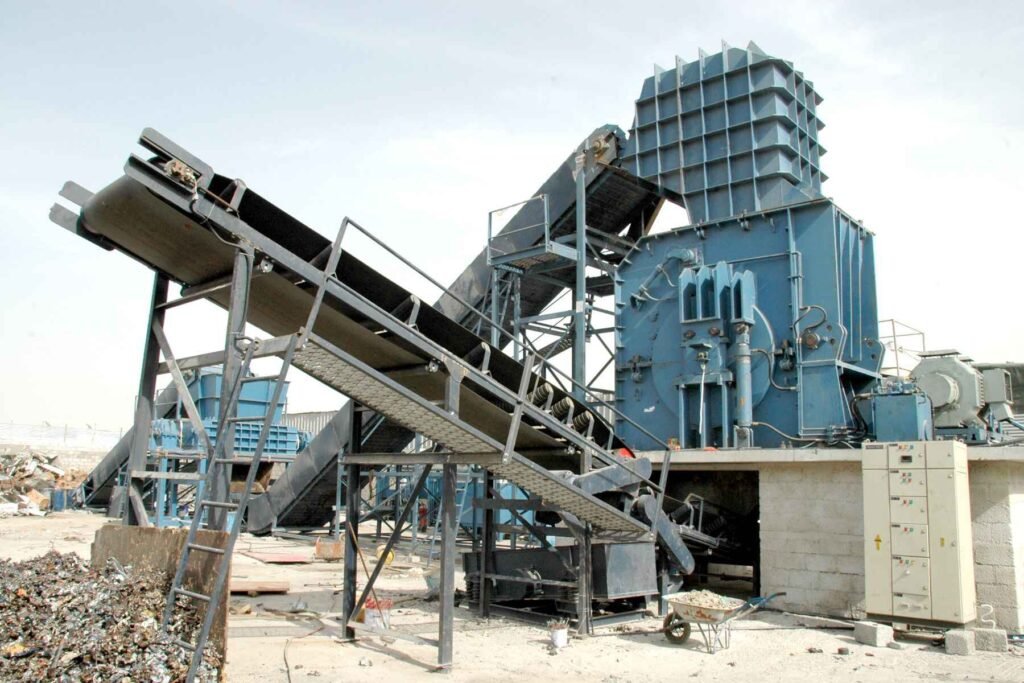When it comes to industrial applications, different types of equipment act as a major source of production capacity and several industries are benefited through them. But similar to all other equipment, heavy machinery has a certain useful life, which indicates that after some time it may become valueless for the intended use. This is where the role of heavy machinery scrap can be considered quite useful.
What is Heavy Machinery Scrap?
Heavy machinery scrap can be defined as the used or partially or fully dismantled industrial equipment which may include but not limited to excavators, bulldozers, cranes, loaders and so on. These machines which used to be an integral part of construction, mining, or manufacturing industries get to an unproductive stage where it becomes impossible to continue using them as a result of factors such as fatigue, obsolesce or inefficiency.
The Process of Scraping Heavy Machinery
The process of scraping heavy machinery involves multiple stages including The Evaluation process entails the evaluation of the current condition of the equipment and its capability of operating longer. After a machine has been considered unsuitable for further use or to undergo repair or remodelling for reuse, it goes through the scraping stage.
Evaluation: They deploy qualified technicians and engineers to assess and evaluate the machinery in order to establish the feasibility of its resale. Elements like age, condition, operation history, and market interest are vital to this criterion.
Dismantling: After the scrapping decision is made, the actual material goes through several stages, including dematerialization, where components, and parts are unplugged and/or removed from the machinery. This is an important step that needs the expertise of experienced personnel as well as appropriate tools to ensure safety and efficiency in the exercise.
Segregation: The component fragments are further divided according to the kind of material which of them is made of. Scrap steel, iron, aluminium and copper are sorted from non-metal components for recycling or for selling throughout the process.
Processing: Some of the metals are separated and after that are subjected to different processes in order to make them ready for the recycling process. It may entail washing, chopping, or even melting and purifying processes to produce raw material for mining scrap metals for production purposes.
Environmental Compliance: As stated earlier, it is mandatory to ensure that environmental laws are followed scrupulously during the scraping process. To reduce the adverse effects of pollution on the environment, the free disposal of oils, lubricants and other sensitive electronic parts and components is controlled.

Benefits of Scraping Heavy Machinery
Resource Conservation: Scrapping heavy machinery is beneficial as it prevents the extraction of new materials since it is possible to salvage the valuable metals and other materials present in such equipment. Environmental conservation and sustainable resource management is enhanced by this.
Revenue Generation: The removal of obsolete and outdated equipment can, at least, recover value by selling scrap metal and parts. Also, it can be noted that recycling programmes may attract certain tax credits or deductions to the companies.
Space Optimization: The elimination of outdated equipment enables organisations to have better layout in the industrial buildings and make improvements in various processes.
Safety Enhancement: Removing inefficient or faulty equipment helps minimise the occurrence of mishaps and accidents within the workplace, greatly enhancing the safety of employees at work.
Conclusion
Therefore, heavy machinery scrap is also very important since it helps in the recycling process and proper disposal of older types of industrial machinery. Hence, it is possible to argue that by adapting good practices in web scraping, businesses can be economically beneficial from the environmental point of view by harvesting resources as well as making profits from it. Consequently, the maximisation of the scrap management technique is highly relevant as industries continuously grow in order to provide a cleaner environment in the long haul.
